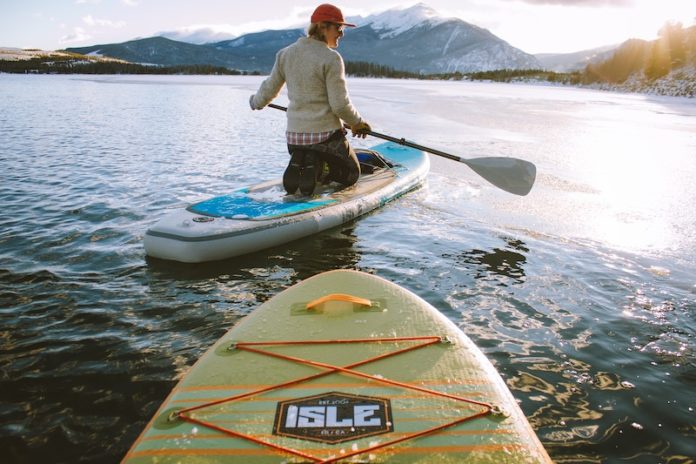Whether you’re getting into SUP or have a friend who is, understanding the basics is essential. Similar to surfing boards, SUP boards also have a lot to offer depending on who is planning to use it, whether you’re looking for a relaxing and comfy ride at the lake or targeting some waves in the ocean.
It’s not easy to do everything from getting a workout to doing some SUP yoga with the same board. It may get a bit tricky at first to decide on the first board, but doing some research will go a long way. Before you choose a board, you need to take into consideration what uses for it do you have in mind like your body and how it handles water. A lot of factors go into making paddle-boards like the width, thickness, and shape.
The most common two types of board are Touring and All-Around boards, so you’re pretty much bound to find what you’re looking for in one of those two. We’ll be conducting a little review of both to help you decide on getting the right one for you.
The Touring SUP Board
The Touring SUP boards are famous with their pointy nosy like the ones used in kayaking. That nose is referred to as displacement hull and is used to provide superior efficiency and performance when compared to other boards. It’s easier to track straighter with more strokes while also being quick with an elegant glide on the waters.
The Touring SUP board is a bit harder for beginners use as they are quite harder to balance on, which will cause newbies to have a less forgiving experience on them. They are increasingly more difficult than their All-Around counterpart in rough waters. It’s recommended for those who like to push their limits.
The inflatable Touring SUP boards are also considered long distance boards perfect for adventures and paddling for a while. They’re more convenient than the All-Around for higher mileage. A lot of professional paddlers use it as it’s one of the most efficient board in getting you from one point to another.
The Basics
There are some basics that are prerequisites to paddle boarding, independent of any board you choose for yourself. Having a personal flotation device (PFD) is required by the law since the boards are considered vessels outside certain turfs and swimming areas.
Depending on where you are, you don’t have to wear a PFD at all times, but children are required to wear them; the age requirement is different for every state. A safety whistle and light are also required by the law as they’re used to warn other paddlers or boats. Clothing differs according to the seasons. Swimsuits and shorts are recommended for the summers and wetsuits or dry suits are recommended for the colder times.
The All-Around SUP Board
The All-Around shape is considered pretty diplomatic and easygoing thanks to being in the middle ground of different activities. It’s a pretty good board when you’re looking to paddle at your own leisure. It’s quite popular with beginners and for those like to paddle recreationally.
Some even take advantage of the wide frame and bring on their pets on some cool rides. They’ll allow you to experience many different aspects of activities and the sport itself. The best thing about them is their proficiency flexibility as beginners can start learning about it and professionals use it in the advanced settings.
It’s quite easy to use it for a myriad of activities like doing yoga, fishing, and surfing. It can smoothly transition from a wavy ride in the ocean to a peaceful one in a lake.
Factors to Consider
We’ve established that All-Around boards are ideal for beginners but there are some other factors that may come into play. You want to address the thickness of the board, the thicker it gets the more buoyant it is.
The narrower your board is, the faster it will be but narrow boards are not recommended for beginners and those who paddle at a leisurely pace. The type of current you’re paddling is also important as boards react differently to different types of water. Your course also affects your paddling, whether it’s straight or with a lot of turns.
Just like in anything, there is no one thing that is the best for everyone. You’ll want to take into consideration all the details and potential paddles you’re planning on. When you’re taking things slow it might be efficient to use All-Around boards, but when things start to pick up, an upgrade to a Touring board should be in the schedule.

